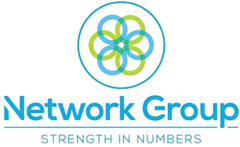DPS Tech News
19
Jan
2025
Wouldn’t it be great if your Windows 11 computer could handle tasks just like a real-life assistant?
That’s exactly what Microsoft wants to achieve with Windows Agent Arena, its new AI project.
The goal is to create smart virtual assistants, known as AI agents. They will be able to complete tasks on your computer. They could save time by doing repetitive tasks for you, such as managing apps or organising files.
So, what exactly is an AI agent? And how could it help your business?
An AI agent is a type of artificial intelligence designed to interact with your computer. Instead of only giving you information, AI agents can perform actions for you.
For example, you could train an AI agent to run your morning routine. It would open your calendar, launch your email app, and check the news. When you begin your day, the agent would know what info to share with you, like a virtual assistant.
Imagine having AI agents that update your software, or even edit documents for you. They could enable privacy options in Microsoft Edge, install extensions or update settings. This saves you time and hassle, so you can focus on bigger things.
The project is open source. That means developers around the world can contribute to help these tools evolve. Although they’re still in development, the potential for businesses is exciting.
For now, one of the best ways to see how helpful AI can be for your business is to give Copilot a try. Need help getting started? Get in touch.
13
Jan
2025
Do you dream of never having to remember another password ever again?
That’s what Windows Hello, Microsoft’s biometric sign-in tool is all about. It helps you log in to your Windows 11 devices quickly and securely – with just a glance or a touch.
Now, Windows Hello is getting a makeover, bringing not only a new look but also enhanced security features that are perfect for busy business owners.
If you’re not familiar with Windows Hello, it lets you skip traditional passwords and sign in using:
· Facial recognition
· Your fingerprint
· Or a simple PIN
This means faster access, better security, and a lot less frustration.
Windows Hello is invaluable for businesses, allowing employees to securely access their apps and devices without the risks associated with weak or reused passwords.
The refresh will improve the design of Windows Hello, so it fits right in with the sleek, modern look of Windows 11. The whole experience will feel smoother and easier, whether you're logging in to your computer or accessing the Microsoft Store.
Microsoft have also made it easier to use passkeys – another secure, password-free login method. With Windows Hello’s new passkey experience, you can choose your preferred sign-in method and switch effortlessly between devices.
These updates are currently in testing, but we should see a rollout soon.
Want to give Windows Hello a go? We can help, get in touch.
18
Dec
2024
If you've installed version 24H2 of Windows 11 for your business, you might have noticed an annoying glitch in File Explorer.
File Explorer is that familiar window you use to browse your files and folders. Normally, it’s straightforward – but some people are running into issues with the “See more” menu after downloading this update.
The menu, which is marked by three little dots, usually pops up below your mouse cursor, giving you options like “Select All” or “View Properties”.
But thanks to a recent bug, the “See more” menu is flying up to the top of the screen, often disappearing out of sight. And if you’re using File Explorer in full-screen mode, some menu options might not even be visible.
Frustrating, to say the least.
Luckily, there’s a simple workaround: Just make sure you’re running File Explorer in windowed mode where it shares the screen with other applications. To do this, click the square icon in the top-right corner (next to the “X” you’d click to close it).
You can then resize the File Explorer window, allowing you to use the “See more” menu, even if it’s still misbehaving.
The good news is that Microsoft are aware of the problem. They’re working on a fix.
Little glitches like this can be a nuisance when you and your team are trying to get things done.
Can we help you squeeze more productivity out of your applications? Get in touch.







